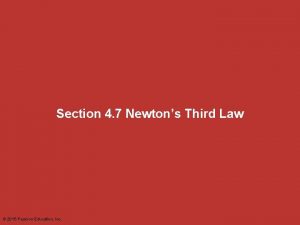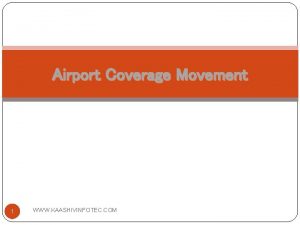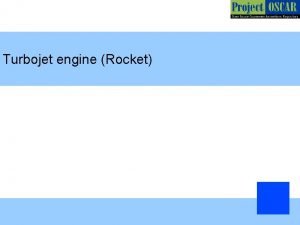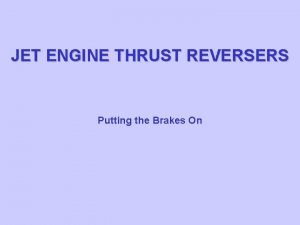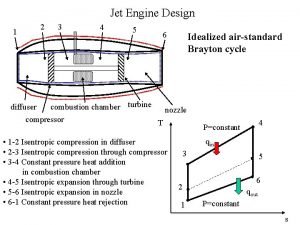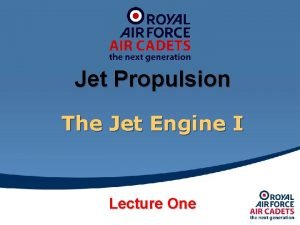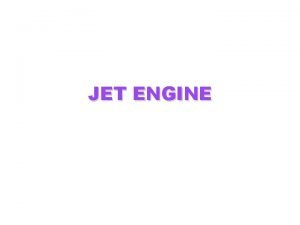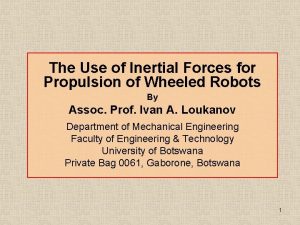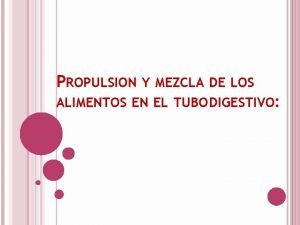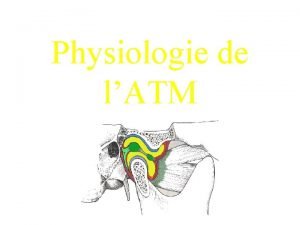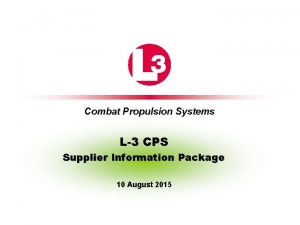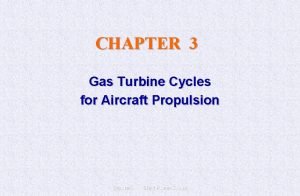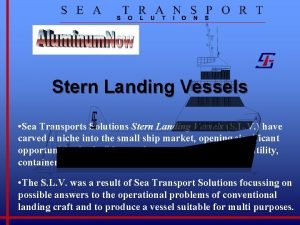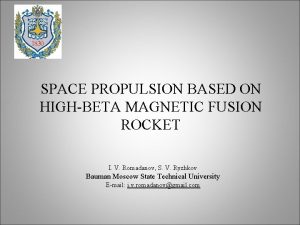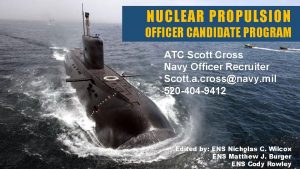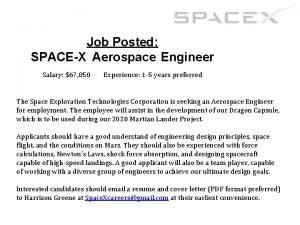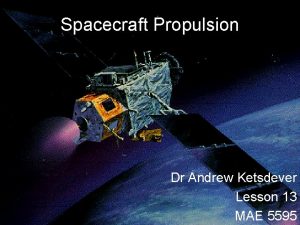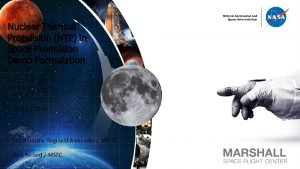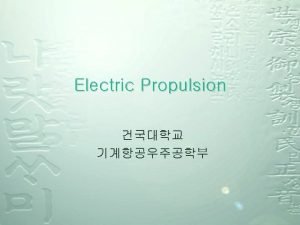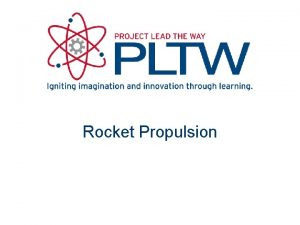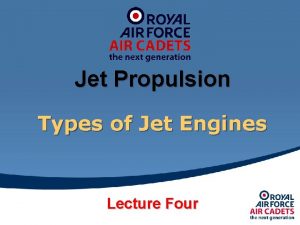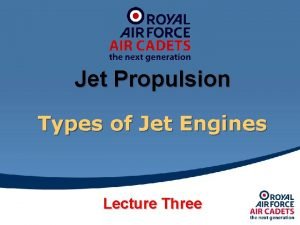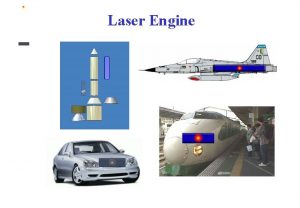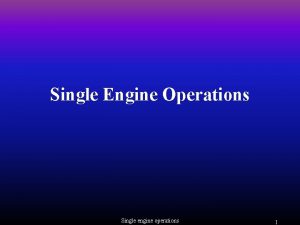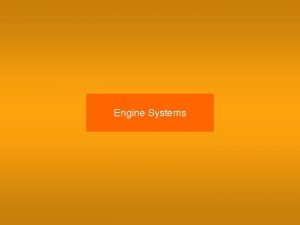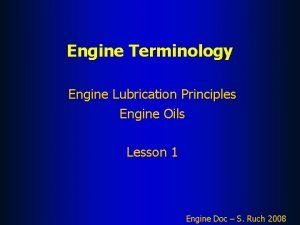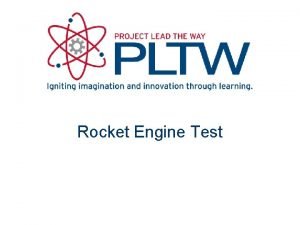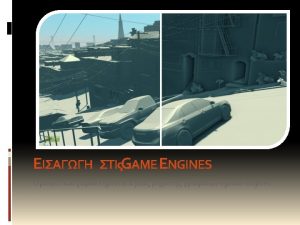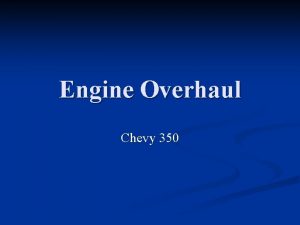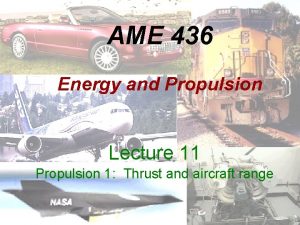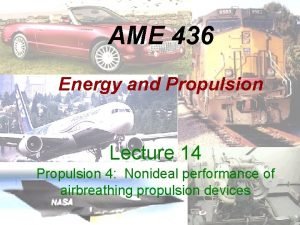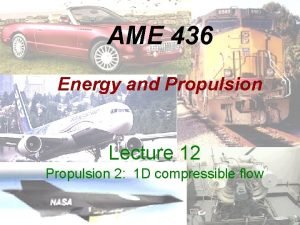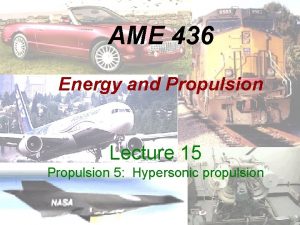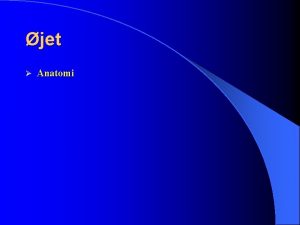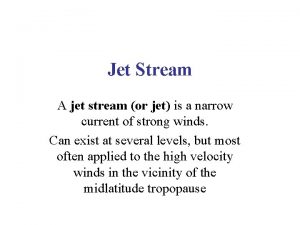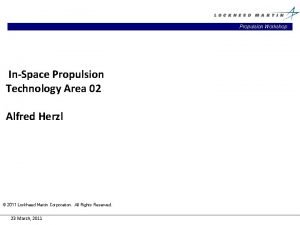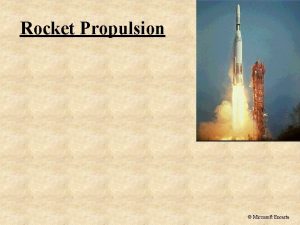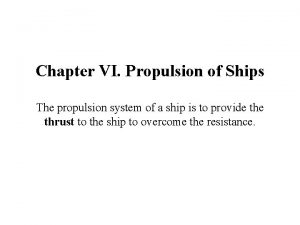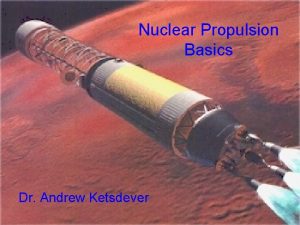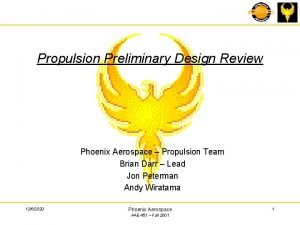Jet Propulsion The Jet Engine I Lecture One







































- Slides: 39

Jet Propulsion The Jet Engine I Lecture One

Introduction The principle of jet propulsion was first demonstrated by Hero of Alexandria as long ago as the first century AD. However, the jet engine, as we know it, did not become a practical possibility until 1930 when Sir Frank Whittle patented a design for a reaction motor suitable for aircraft propulsion.

Introduction In both the gas turbine and the motor car engine air is compressed, fuel is mixed with it, and the mixture is burnt. The heat which results produces a rapid expansion of the gas and this is used to do the work.

The Jet Engine is made up of FOUR MAIN SECTIONS Combustors Exhaust Compressor Turbine The Compressor squeezes the incoming air. The Combustors produce the energy for thrust. The Turbine drives the compressor and gearbox. The Exhaust produces thrust for the engine.

The Jet Engine is made up of FOUR MAIN SECTIONS Induction Compression Combustion Exhaust And the operating sequence is – Induction, Compression, Combustion, Exhaust Induction pulls air into the system. Compression squeezes the incoming air. Combustion mixes air with fuel and ignite it. Exhaust produces the thrust for the engine.

The Compressor The compressor, is situated at the front of the engine, COMBUSTION COMPRESSOR TURBINE CHAMBERS and is driven by the turbine. The compressor performs two functions it draws air into the engine and compresses it, before delivering it into the combustion chambers.

The Compressor Whenever air is forced into a smaller space, two things happen – The Pressure of the trapped air Increases, The Temperature of the trapped air Increases. A jet engine compressor is a constant flow of air, constantly being compressed.

Compressor Operations The Compressing Action consists of taking a quantity of air, and forcing it into a smaller space. This square represents a quantity of air This square represents the same quantity of air but squeezed into a smaller volume LET’S SEE HOW THIS IS DONE

Compressor Operations The Compressing Action consists of taking a quantity of air, and forcing it into a smaller space. SQUEEZE PUSH BACK SQUEEZE PUSH BACK The air is pushed and squeezed into ever smaller spaces.

Compressor Operations The Compressing Action consists of taking a quantity of air, and forcing it into a smaller space. SQUEEZE PUSH BACK BIG AT FRONT PUSH BACK SQUEEZE PUSH BACK SMALL AT REAR This is why compressors are shaped the way they are

Compressor Operations Compressors have a series of ‘stages’, BIG AT FRONT SMALL AT REAR each stage giving a small pressure rise over the previous stage.

Compressor Operations Each stage consists of a Rotor Blade to the front FRONT STATOR FIFTH STAGE ROTOR STATOR FOURTH STAGE ROTOR STATOR THIRD STAGE ROTOR STATOR ROTOR SECOND STAGE STATOR ROTOR FIRST STAGE REAR and a Stator Vane to the rear.

Compressor Operations FRONT STATOR ROTOR STATOR ROTOR Compressor Rotor Blades are aerofoil sections producing lift, while rotating like propellers. REAR As the blades rotate they force air to the rear, they do the ‘pushing’ back.

Compressor Operations FRONT STATOR ROTOR STATOR ROTOR The Stator Vanes are fixed to the engine casing, in clusters, or a complete ring. REAR The vanes do the ‘squeezing’ or compressing of the forced back air.

Compressor Operations Each stage produces a small pressure rise which factored for the number of stages, FRONT FIFTH STAGE STATOR ROTOR STATOR FOURTH STAGE ROTOR STATOR THIRD STAGE ROTOR STATOR ROTOR SECOND STAGE STATOR ROTOR FIRST STAGE REAR would produce an overall pressure rise, known as the ‘Pressure Ratio’. Pressure ratios around 26: 1 are common. (meaning pressure is 26 times ambient)

Compressor Operations Early jet engines had Centrifugal Compressors, with both rotor vanes and stator vanes. They achieved the pressure increase half in the stator vanes and half in the rotor vanes. Modern jet engines use Axial Flow Compressors to achieve higher pressure ratios.

The Turbine is situated at the back of the engine, and its purpose is COMPRESSOR TURBINE GEARBOX to drive the compressor and gearbox. The hot combustion gasses leave the flame tube and pass through the Nozzle Guide Vanes (NGV’s) which are arranged in front of the Rotor Blades.

The Turbine SHAFT TURBINE The function of the turbine blades is to drive the shaft using spent exhaust gasses.

The Turbine TURBINE Convergent Duct Divergent Duct If the gap between turbine blades is smaller at the trailing edge compared to the leading edge, a Convergent Duct is formed. If the gap is larger at the trailing edge compared to the leading edge a Divergent Duct is formed.

The Turbine TURBINE Convergent Duct Divergent Duct When air moves through a Convergent Duct the velocity of the air increases but pressure and temperature decrease. When moving through a Divergent Duct the velocity of the air decreases but pressure and temperature increase.

The Turbine When air moves through a Convergent Duct the velocity of the air increases but pressure and temperature decrease. Convergent Duct Divergent Duct When moving through a Divergent Duct the velocity of the air decreases but pressure and temperature increase.

Check of Understanding Who first patented a design for a reaction (jet) type motor suitable for aircraft propulsion? Sir Frederick Royce Sir Frank Whittle Herr Willy Messerschmitt Professor Barnes Wallis

Check of Understanding A simple jet engine is made up of four main sections, what are these four main sections called? The intake, compressor, turbine, and mounts The compressor, combustor, turbine and exhaust The intake, compressor, turbine, and exhaust The compressor, shaft assembly, turbine and exhaust

Check of Understanding A compressor is made up of a number of stages, each consisting of rotor blades and stator vanes. How are these arranged? Rotor blades in front of Stator vanes Rotor blades on top of Stator vanes on top of Rotor blades Stator vanes in front of Rotor blades

Check of Understanding The illustration shows the typical layout of one type of jet engine. Which part of the engine is the exhaust? W X Y Z

Check of Understanding What advantage do axial flow compressors have compared to centrifugal compressors? Axial flow compressors are lighter Axial flow compressors achieve higher pressure ratios Axial flow compressors can surge Axial flow compressors are less complicated

Check of Understanding What is the purpose of the intake icing tube? To prevent the turbine from freezing To prevent ice from forming in the combustion chamber To prevent the inlet vanes in the compressor from freezing To feed cold air to the compressor

Check of Understanding What is the purpose of the Turbine in a jet engine? To drive the compressor and gearbox To drive the gas flow into the atmosphere To energise the gas stream To vaporize the fuel as much as possible

Check of Understanding The illustration shows the typical layout of one type of jet engine. Which part of the engine is the combustor? W X Y Z

Check of Understanding What is the function of the Turbine Blades? To drive the shaft using spent exhaust gasses To compress the received air in the engine intake To drive out the hot exhaust gasses To drive the shaft using air sucked into the inlet vane

Check of Understanding What happens to pressure, temperature and velocity of the air passing through a divergent duct? Pressure increases, temperature increases, velocity reduces Pressure reduces, temperature increases, velocity increases Pressure increases, temperature reduces, velocity increases Pressure reduces, temperature reduces, velocity increases

Check of Understanding What is the operating cycle sequence for a jet engine? Combustion, induction, compression, exhaust Induction, combustion, compression, exhaust Induction, compression, exhaust, combustion Induction, compression, combustion, exhaust

Check of Understanding How is the compression ratio of a jet engine determined? By dividing compressor outlet pressure by atmospheric pressure By adding compressor outlet pressure and atmospheric pressure By multiplying compressor outlet pressure by atmospheric pressure By the length of the compressors

Check of Understanding The illustration shows the typical layout of one type of jet engine. Which part of the engine is the turbine? W X Y Z

Check of Understanding Centrifugal compressors have rotor vanes and stator vanes. In which of these vanes is the pressure increase achieved? 20% in the stator vanes and 80% in the rotor vanes In the rotor vanes only Half in the stator vanes and half in the rotor vanes In the stator vanes only

Check of Understanding What drives a jet engine's compressor? Air pressure at the intake The gearbox The shaft assembly The turbine

Check of Understanding What happens to pressure, temperature and velocity of the air passing through a convergent duct? Pressure reduces, temperature reduces, velocity increases Pressure reduces, temperature increases, velocity increases Pressure increases, temperature reduces, velocity increases Pressure increases, temperature increases, velocity reduces

Check of Understanding A turbine is made up of a number of stages, each consisting of nozzle guide vanes (NGV's) and rotor blades. How are these arranged? NGV's are in front of rotor blades Rotor blades are on top of NGV‘s NGV's are on top of rotor blades Rotor blades are in front of NGV‘s

Jet Propulsion End of Presentation
 Squid use jet propulsion for rapid escapes
Squid use jet propulsion for rapid escapes Yelvington jet aviation jet fuel
Yelvington jet aviation jet fuel How a jet engine works animation
How a jet engine works animation Tornado thrust reverser
Tornado thrust reverser Jet engine diffuser
Jet engine diffuser Divergent duct jet engine
Divergent duct jet engine Jet engine
Jet engine 01:640:244 lecture notes - lecture 15: plat, idah, farad
01:640:244 lecture notes - lecture 15: plat, idah, farad Inertial propulsion
Inertial propulsion Propulsión en el sistema digestivo
Propulsión en el sistema digestivo Condyle orbitant
Condyle orbitant L3 cps
L3 cps Propulsion efficiency
Propulsion efficiency Stern of a vessel
Stern of a vessel Vasimr
Vasimr Nuclear propulsion officer candidate program
Nuclear propulsion officer candidate program Spacex salary aerospace engineer
Spacex salary aerospace engineer Satellite propulsion system
Satellite propulsion system Nuclear propulsion
Nuclear propulsion Andrew ketsdever
Andrew ketsdever демо
демо External and internal combustion engine
External and internal combustion engine One god one empire one emperor
One god one empire one emperor One one one little dog run
One one one little dog run One king one law one faith
One king one law one faith One empire one god one emperor
One empire one god one emperor One ford
One ford See one do one teach one
See one do one teach one One price policy
One price policy Willow cabin speech
Willow cabin speech See one do one teach one
See one do one teach one One vision one identity one community
One vision one identity one community One vision one identity one community
One vision one identity one community Alabama boating test
Alabama boating test Hình ảnh bộ gõ cơ thể búng tay
Hình ảnh bộ gõ cơ thể búng tay Bổ thể
Bổ thể Tỉ lệ cơ thể trẻ em
Tỉ lệ cơ thể trẻ em Chó sói
Chó sói Tư thế worm breton
Tư thế worm breton
